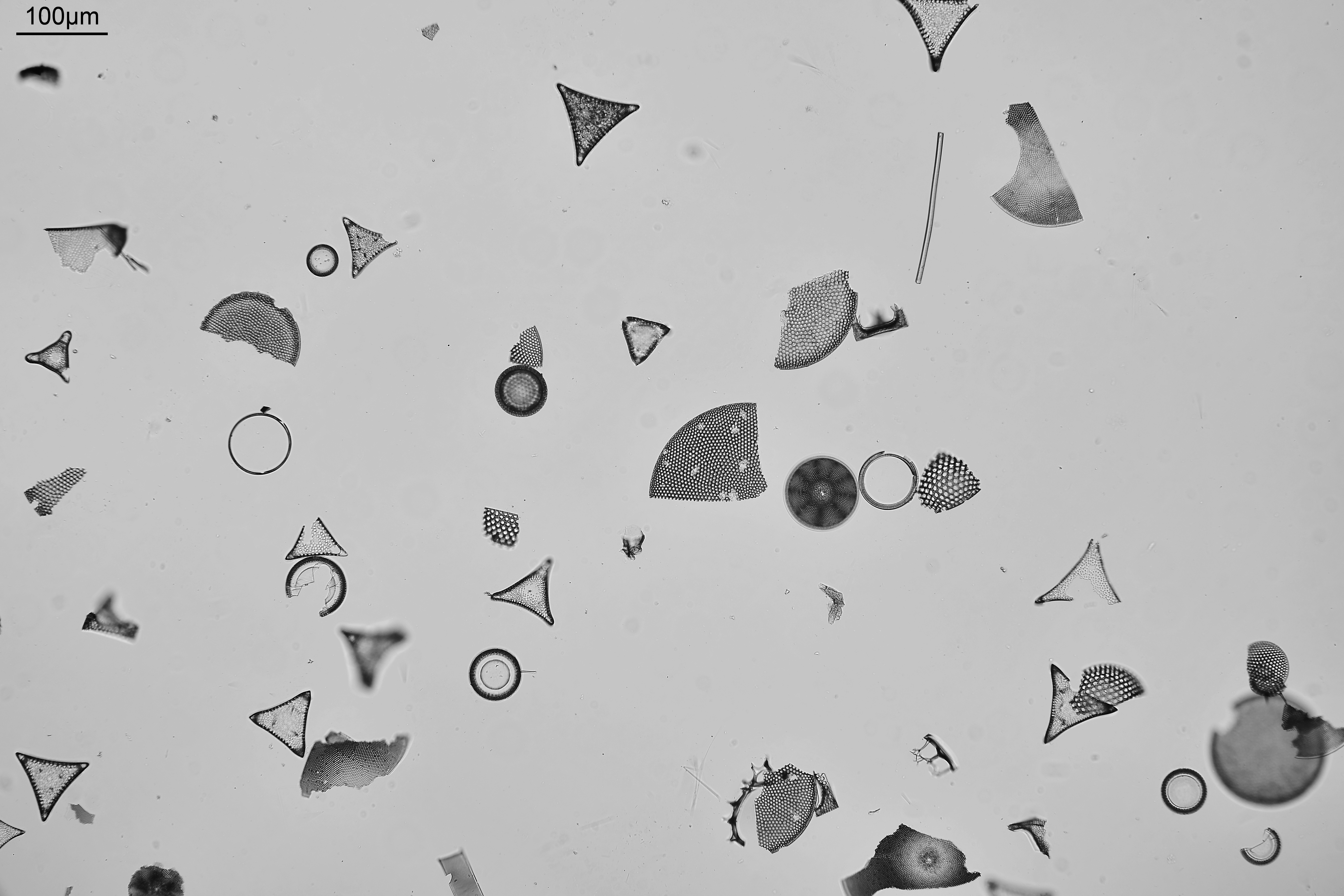
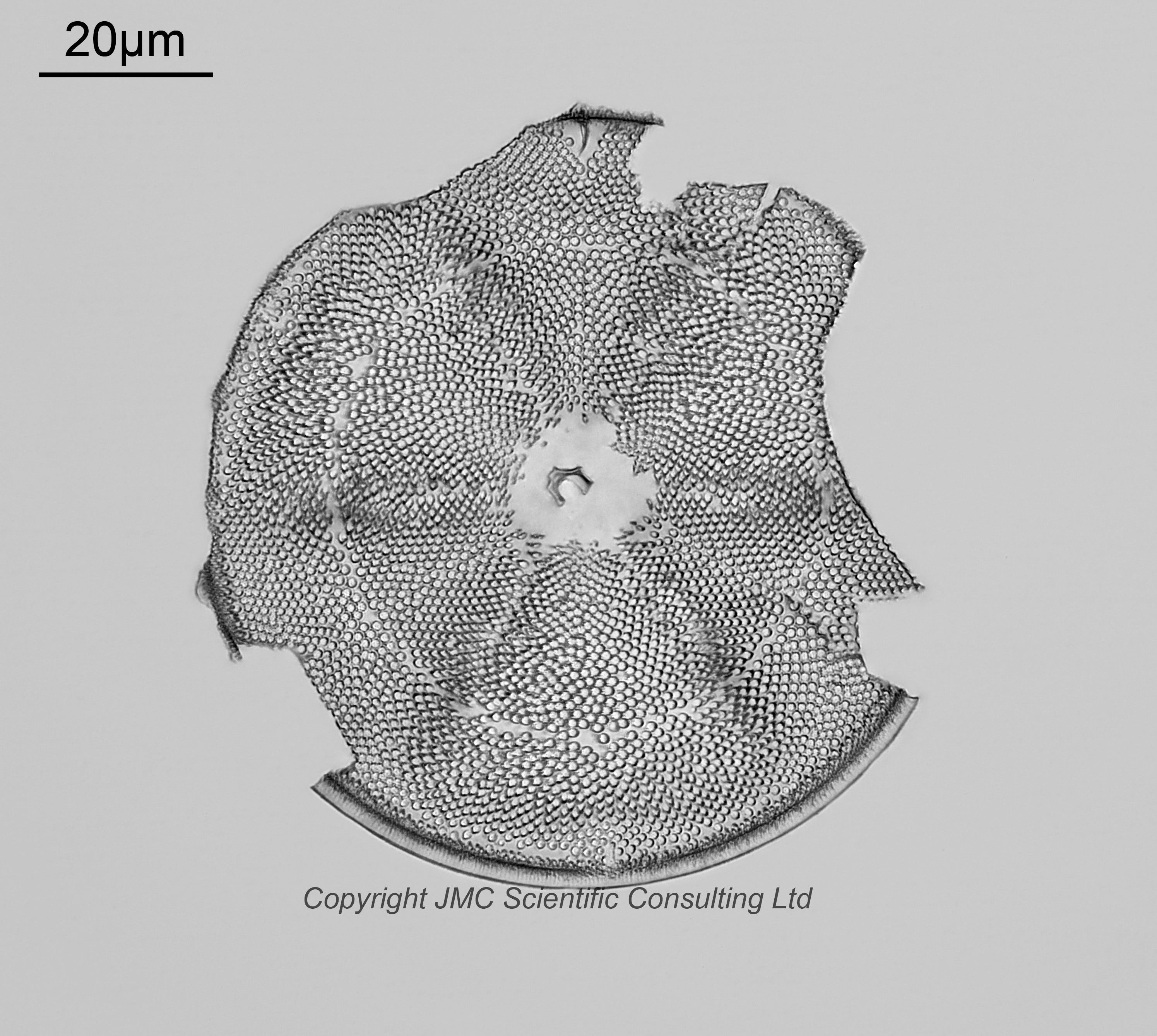
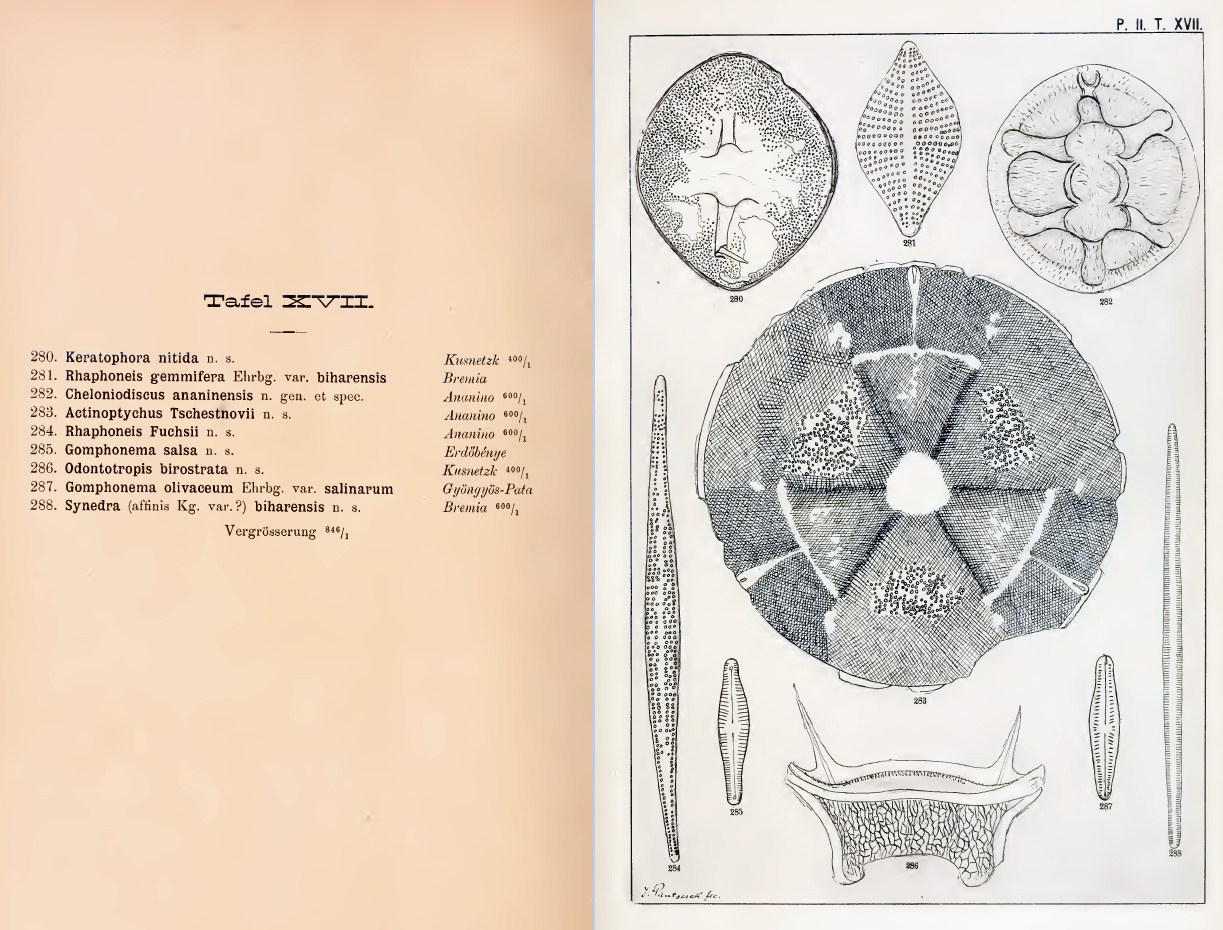
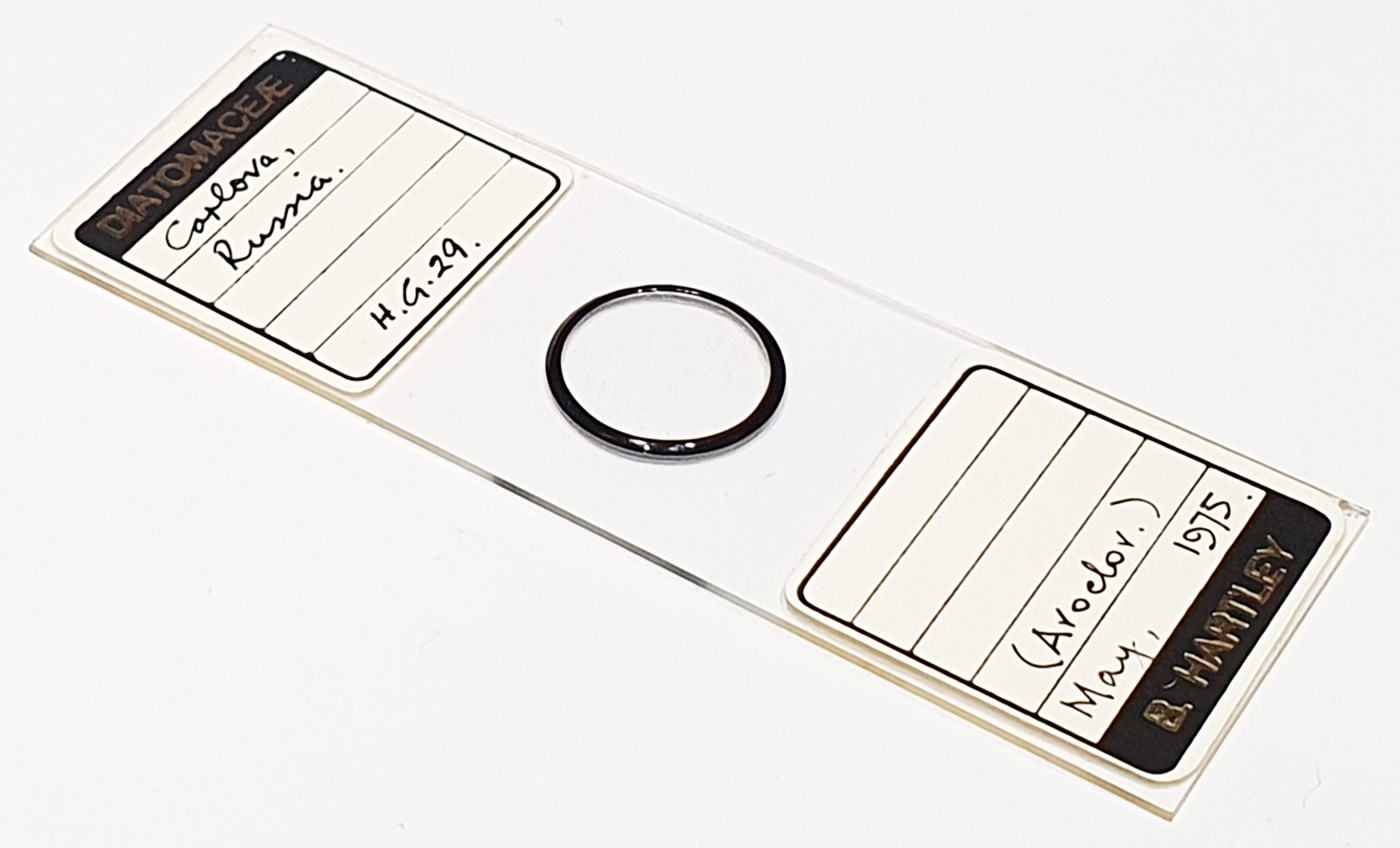
Strew from Carlova, Russia. Nice variety of species present. Prepared by Bernard Hartley. Mounted Aroclor, and prepared in May 1975. Olympus BHB microscope using 450nm LED light. 40x Leitz Pl Apo NA 1.00 objective, oil immersion. Olympus Aplanat Achromat condenser, oil immersion, brightfield lighting. 2.5x Nikon CF PL photoeyepiece. Monochrome converted Nikon d850 camera. 29 images stacked in Zerene (Pmax).
I’m not a 100% on this one. It looks quite like Actinoptychus Tschestnovii in Pantocsek, J. (1889). Beiträge zur Kenntnis der Fossilen Bacillarien Ungarns. Teil II. Brackwasser Bacillarien. Anhang: Analyse de marine Depots von Bory, Bremia, Nagy-Kurtos in Ungarn; Ananio und Kusnetzk in Russland. Nagy-Tapolcsány, Buchdrucherei von Julius Platzko, 123 pp., 30 pls. In this is it described (via Google translate, so keep that in mind) as;
Actinoptychus Tschestnovii n. s. tab. 17, fig. 283. — Margined circular valves, with a hyaline margin; primary segments 6 cuneiform, 3 raised, with an appendage surrounded by a bare marginal space, decorated with two spots and a bare transverse ribbon in the middle, secondary 3 depressed, the middle part marked with a widened diffuse-punctate space; rules 6, with strips running to the central round ark widened bare; punctate structure; 8-10 points in 10 µm. arranged in straight and oblique lines. – Diameter. 138 µm. Ananino (Russia).
EDIT. I’ve recently revisited this slide and rather than adding a new page, I’m just going to add it to this one.
The diatom is a Pseudostictodiscus species (fairly sure this is Pseudostictodiscus angulatus). Olympus BHB microscope using 450nm LED light. 50x Leitz Fluoreszenz NA 1.00 objective, water immersion. Olympus Aplanat Achromat condenser, oil immersion, oblique lighting. 2.5x Nikon CF PL photoeyepiece. Monochrome converted Nikon d850 camera. 32 images stacked in Zerene (Pmax).
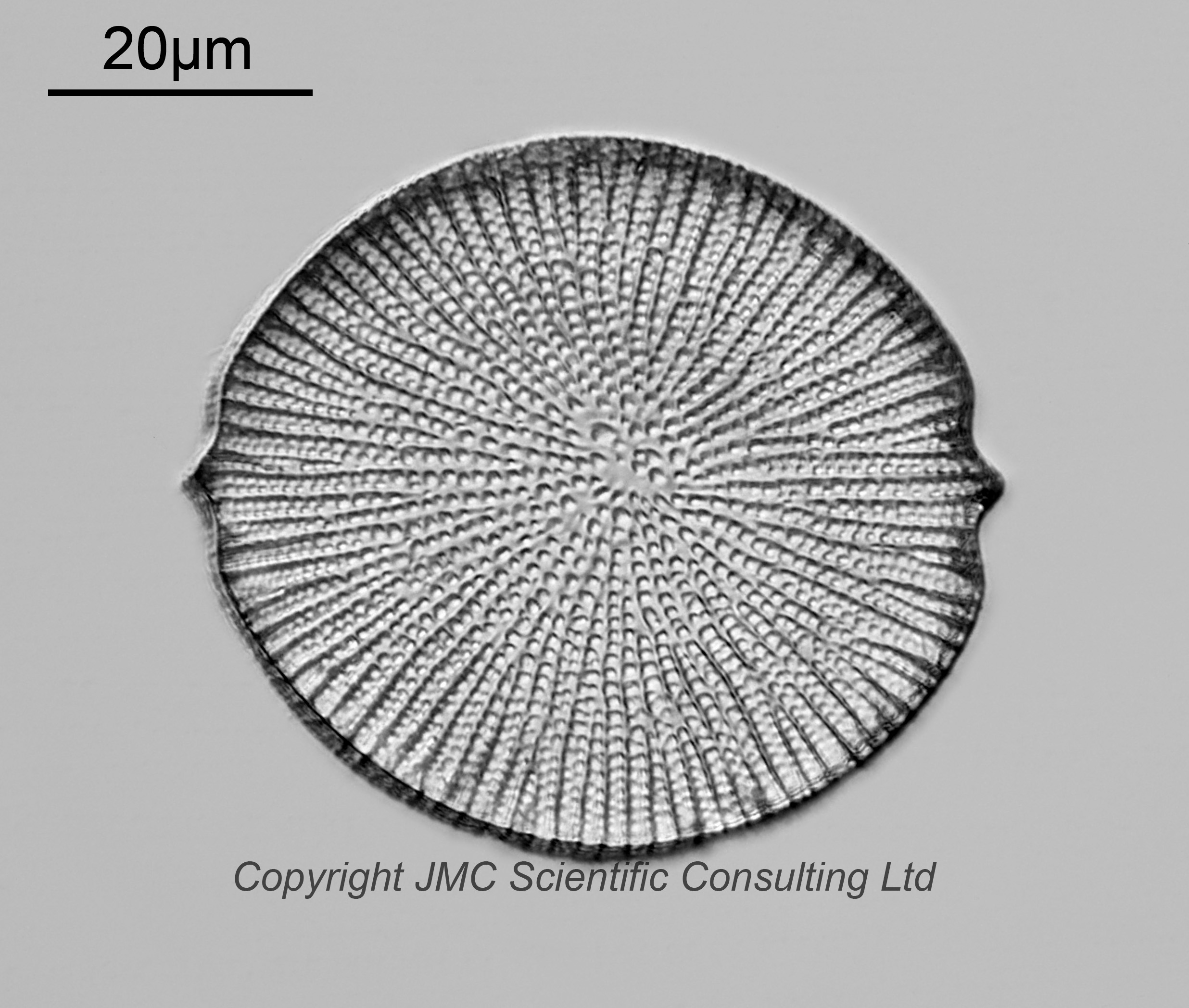
This was close to the coverslip ring and hence my usual 40x and 63x Leitz objectives were no good (to short a working distance). The 50x Leitz Fluoreszenz water immersion objective has a very long working distance so it is ideal in situations like this.
This is described in Schmidt’s Atlas (Plate 74, Figures 26-30). Translated it says;
Mors, Pseudostictodiscus angulatus Grunow. Grunow comments that the two [halves of the diatom] are not exactly the same, the flatter one has no ribs and always has a rudimentary spine in the middle, which is missing in my drawings; the corners projecting slightly, therefore approaching the Biddulphia.